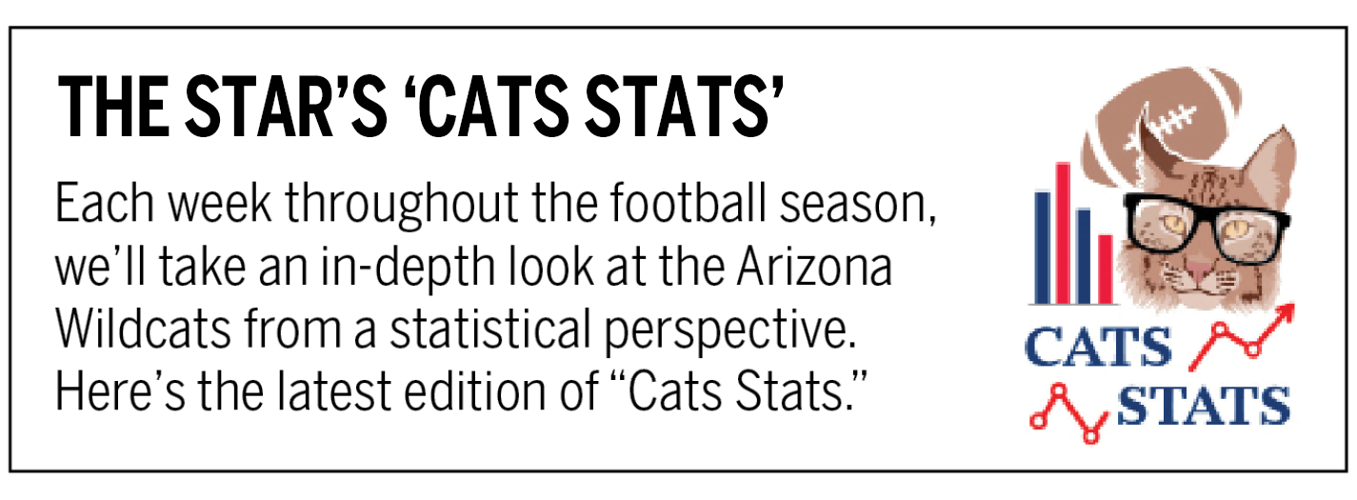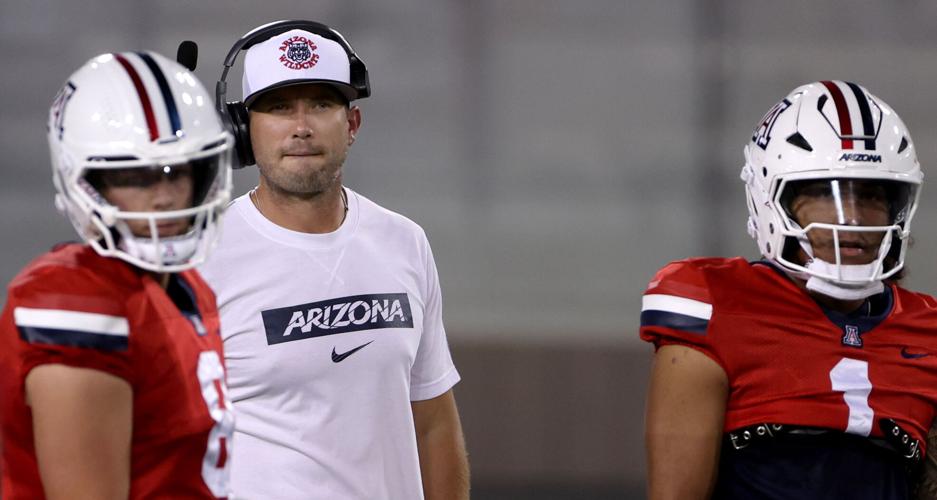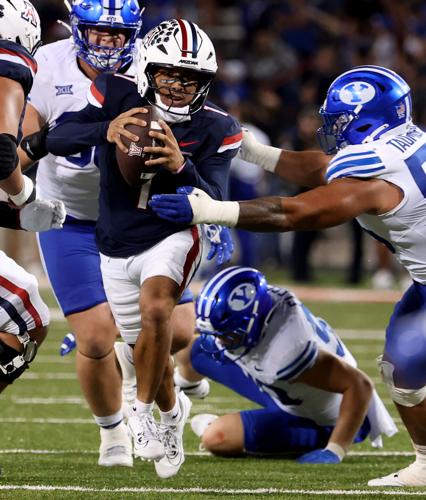Arizona, we have a problem.
Heading into SaturdayŌĆÖs game at Houston, UA ranks 15th in the 16-team Big 12 and 125th nationally in red-zone touchdown rate at 46.4%.

Touchdown rate is the go-to stat to assess red-zone performance. Scoring rate is more widely cited, but that includes field goals. Defenses generally consider it a win if they keep the opposition out of the end zone.
The Wildcats have reached the end zone only 13 times in 28 tries through six games, failing to arrive at their desired destination for a variety of reasons. WeŌĆÖll explore what those are and what Arizona can do to improve in this weekŌĆÖs ŌĆ£Cats Stats.ŌĆØ
Before we begin our deep dive, itŌĆÖs notable that the Wildcats already have 28 red-zone attempts. They had 24 all of last season ŌĆö second fewest in the nation. Arizona is moving the ball. The Cats just arenŌĆÖt scoring as much as theyŌĆÖd like.
People are also reading…
On several occasions, Arizona has hurt itself. The Wildcats have settled for a field goal or field goal attempt 11 times. In seven of those instances, Arizona incurred a penalty.
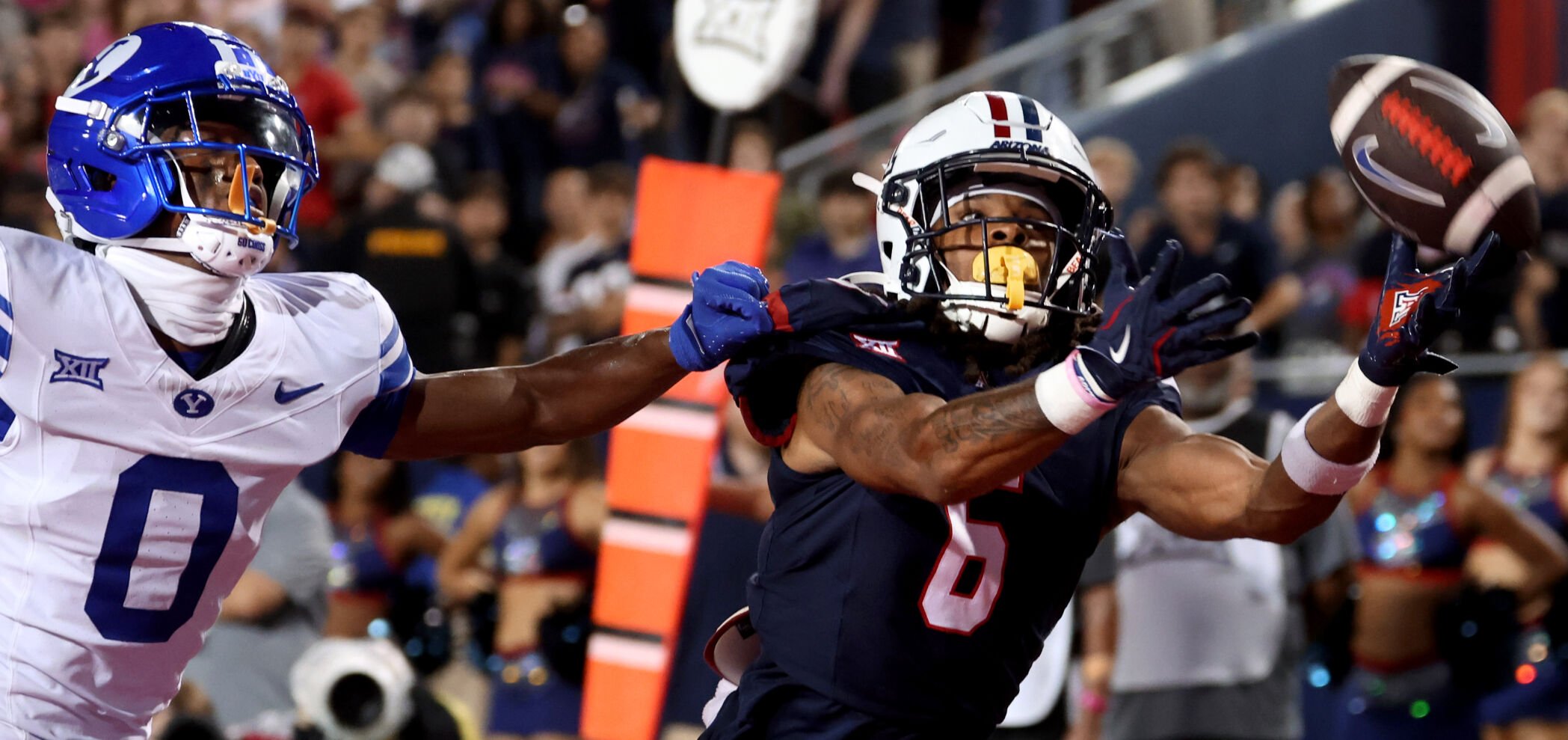
Arizona wide receiver Javin Whatley, right, has the WildcatsŌĆÖ last-gasp pass glance off his fingertips after beating BYU defensive back Evan Johnson to the corner of the end zone on fourth down of the second overtime in the Cats' 33-27 loss on Oct. 11, 2025, at Arizona Stadium.
Six of those infractions were for offensive holding, a 10-yard loss. Only once has ├█╠ęė░Ž±AV overcome a holding penalty in the red zone to score a touchdown, against Kansas State on Sept. 12.
The other red-zone possession undermined by a penalty occurred later in that game. This time it was a false start, a 5-yard foul. (Arizona had a false start and a holding penalty on its fourth possession vs. KSU.)
Any type of negative play can stall a drive in the red zone. Sacks led to field goals or field goal attempts in the Weber State and Kansas State games. A red-zone possession vs. Hawaii featured a holding penalty and a sack (and, yes, it ended with a field goal).
Only two red-zone possessions that culminated with field goals didnŌĆÖt feature a negative play. Arizona didnŌĆÖt have time for anything but a field goal on a half-ending drive vs. Oklahoma State. The Wildcats settled for a field goal in the second quarter against BYU last week despite having first-and-goal from the 6-yard line.

Offensive coordinator/quarterbacks coach Seth Doege watches with a couple of his charges, Braedyn Locke, left, and Noah Fifita, as the Wildcats run offensive drills in preseason training camp, Aug. 9, 2025, in Tucson.
The next three plays were incomplete passes. That became something of a pattern against the Cougars ŌĆö one the Cats would be wise not to repeat.
Run vs. pass
After a one-play red-zone possession in the first quarter ŌĆö a 17-yard touchdown pass from Noah Fifita to Kris Hutson ŌĆö Arizona had four more opportunities vs. BYU. The Wildcats ran 20 scrimmage plays that werenŌĆÖt negated by penalties. Fourteen of them were pass attempts. Two of the six running plays were scrambles by Fifita.
Put another way: Only four of the 20 scrimmage plays in the red zone on those possessions were called runs. ThatŌĆÖs not enough. Nor was ArizonaŌĆÖs scoring output. Those red-zone trips netted only two field goals in a game the Wildcats lost 33-27 in double overtime.
A lot goes into those calls, as offensive coordinator Seth Doege explained this week. Some of them were RPOs, or run-pass options. Fifita chose to take the pass option in certain instances where he might have been better off handing off or keeping the ball himself. The opponent and the defensive alignment are factors, as well.

Arizona quarterback Noah Fifita (1) sprints out of the pocket as the BYU defense flushes him out during the first overtime in their Big 12 game, Oct. 11, 2025, at Arizona Stadium.
It isnŌĆÖt easy to run or reach the end zone against BYU. The Cougars are tied for second in the Big 12 and tied for 14th nationally in red-zone defense, allowing opponents to score touchdowns only 41.2% of the time.
Doege also said that on the last possession, with Arizona down by six points, ŌĆ£I didnŌĆÖt want to take it out of his hands ŌĆö our best player is No. 1.ŌĆØ
That would be Fifita. After a running play that gained a first down on fourth-and-1, the next four plays were designed passes (including one scramble). The last easily could have been a touchdown; Fifita threw a perfect pass in the corner of the end zone to Javin Whatley, who couldnŌĆÖt come down with it.
Fifita and friends
We agree with Doege that Fifita is ArizonaŌĆÖs best offensive player, or at least its most valuable one. But we question whether itŌĆÖs the right move to put that much responsibility on his shoulders.
Fifita is on his way to becoming the most prolific passer in program history. HeŌĆÖs a superb leader and a young man of the highest character. But he has some physical limitations that are exacerbated by the red zoneŌĆÖs tight quarters.
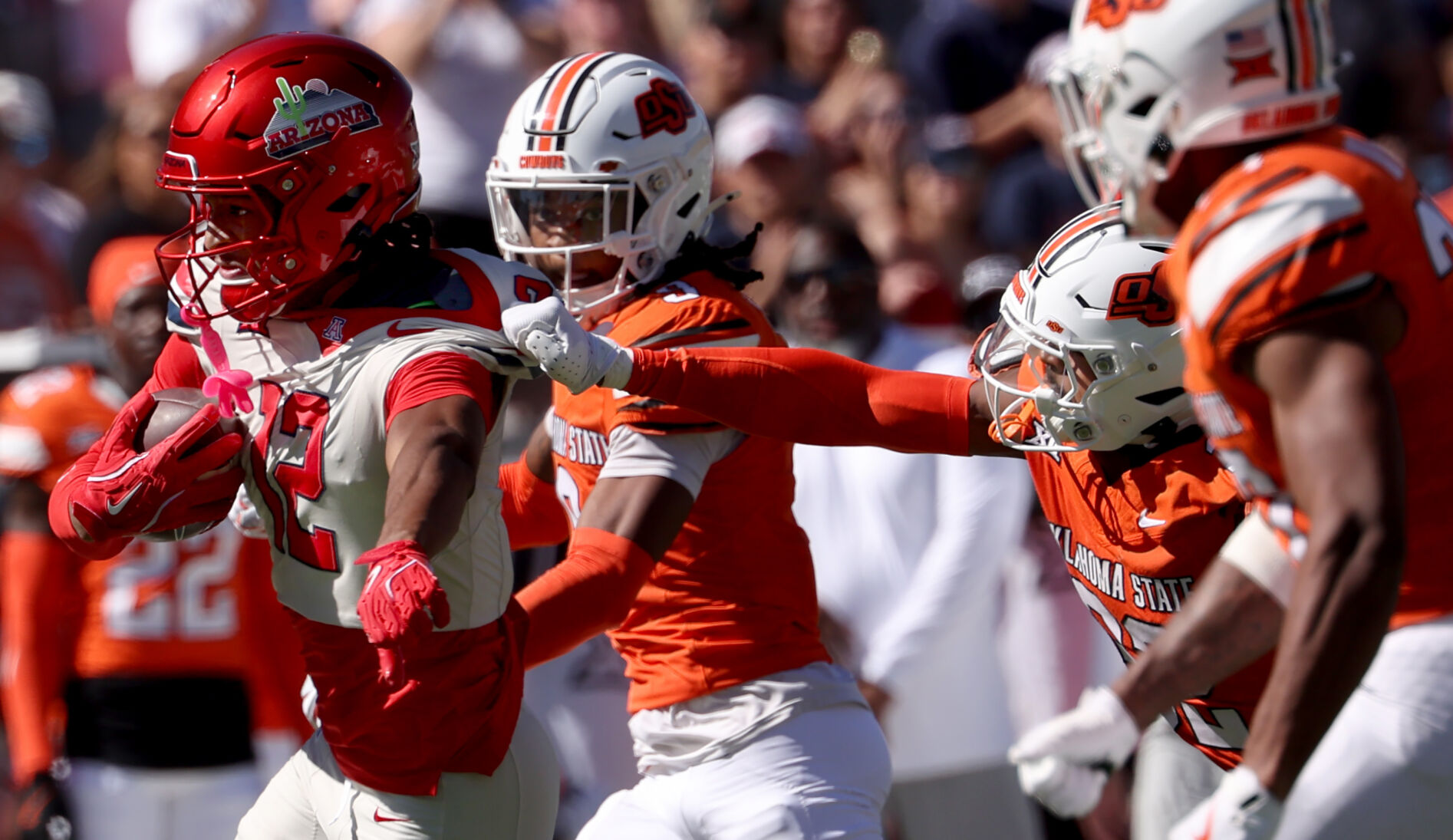
Arizona wide receiver Tre Spivey (12) runs out of the grip of Oklahoma State safety Mordecai McDaniel after his catch during the third quarter on Oct. 4, 2025, at Arizona Stadium.
FifitaŌĆÖs efficiency in the red zone has declined since his breakout campaign in 2023. That year, he completed 70.3% of his red-zone attempts with a 16-1 touchdown-to-interception ratio.
Last year his completion rate fell (57.8%), but his TD-INT ratio remained elite (9-0). So far this year, Fifita has completed 54.3% of his red-zone attempts with a 7-2 TD-INT ratio.
It helped having Tetairoa McMillan on the roster. T-Mac scored eight red-zone touchdowns in 2023. He had only two last year but demanded constant attention from defenses.
Tre Spivey is built similarly to McMillan at 6-4, 212 pounds. He isnŌĆÖt on McMillanŌĆÖs level athletically, but Spivey has displayed toughness and sure hands in high-traffic areas.
Spivey has the second-best contested-catch rate (60%) on this yearŌĆÖs team among players with more than one such opportunity, . He has caught three of ArizonaŌĆÖs eight passing touchdowns in the red zone. He should have more than 14 total targets, which ranks sixth among UA pass catchers.
ŌĆśKedŌĆÖ zone
Arizona also should lean more heavily on tailback Kedrick Reescano, whoŌĆÖs healthy again after missing some time. Reescano reminded everyone how physical he can be against BYU. HeŌĆÖs averaging 4.12 yards after contact per rushing attempt, fifth most among Big 12 running backs (minimum 25 carries).
Sometimes the best-laid plans donŌĆÖt go your way. Arizona handed the ball to Reescano three straight times to start the first overtime. The third was a 9-yard touchdown ... that was wiped out be a holding penalty.
Doege shouldnŌĆÖt let that deter him. Keep pounding the rock with Reescano in the red zone.
ItŌĆÖs been a minute since Arizona relied more on the run than the pass inside the oppositionŌĆÖs 20-yard line. The last time the Wildcats had more rushing touchdowns than passing touchdowns in the red zone in a full season was 2019. Their opponents have done it each of the past four seasons (including this one).
Converting red-zone opportunities into touchdowns of any sort wonŌĆÖt be easy against Houston. You know whoŌĆÖs tied with BYU in red-zone defense? The H-Town Cougars. They even held mighty Texas Tech to two touchdowns in eight trips (25%). The Red Raiders are 18 of 28 (64.3%) against everybody else.
Contact sports reporter/columnist Michael Lev at mlev@tucson.com. On X (Twitter): @michaeljlev. On Bluesky: @michaeljlev.bsky.social

















